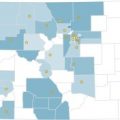
I’m a voracious reader. My mom tells me I started reading the Denver Post when I was 5 years old—a morning ritual I continue to this day. Since my son Oliver was born two years ago though, I’ve had fewer chances to sit down and read anything much longer than a news article or a New Yorker piece. I’ve been stuck in the middle of Philip Roth’s iconic book American Pastoral for months. I’m quick to blame the craziness of raising a toddler for my novel reading woes, but I recently heard an interview with Tufts University Professor Maryanne Wolf that made me think it might be a deeper issue.
Dr. Wolf is a cognitive neuroscientist and has been researching the impact our new digital reality has on reading skills and comprehension. Similar to how television produced our “soundbite culture,” Dr. Wolf posits that online reading is producing an “eyebite culture.” Taking this concept further, she theorizes that online reading is having a direct impact on our ability to concentrate on reading and interpret deeper meanings. In her words, Dr. Wolf claims, “we’re becoming so inured to seizing the most salient word that we are literally eliminating the music, the thoughts in between those words, some of the most precious aspects of written language.”
Novels don’t provide us with the latest news or the Cliff Notes of a story. They start by laying out context and background, then there are chapters upon chapters of character development and build up, finally followed by action-packed scenes where the real meat of the story occurs. If you try to jump right to the action, you’ve got no personal investment in the outcome, and the novel loses its power. But that’s what our new short attention span reading style is demanding—get to the punch line, already.
Dr. Wolf’s theories about the impact of technology on reading got me thinking about another of my favorite pastimes: working in partnership with communities. Technologies like video conferencing, webinars, and even texting and email have made it easier than ever to stay connected to community leaders across the state. However, those interactions are quite analogous to the surface level reading we engage in and can’t get us to the end goal of a working partnership grounded in mutual trust and a common mission.
Community partnerships are not built in a day, a week, a month, or by email alone. Just like with novels, there is much groundwork to be done to understand the local context and identify all the important parties to bring together. There are many in-person meetings to develop deep relationships and build trust. Once all the pieces are in place, these partnerships can lead local health systems change in ways that no one organization ever could.
I may need my modern tech tools to keep up with the daily barrage of information and manage my busy schedule, but I won’t let them replace my face-to-face meetings and the enjoyment I get from partnering with communities for the long haul. Now if I could just find some time to get back to reading whole novels…




